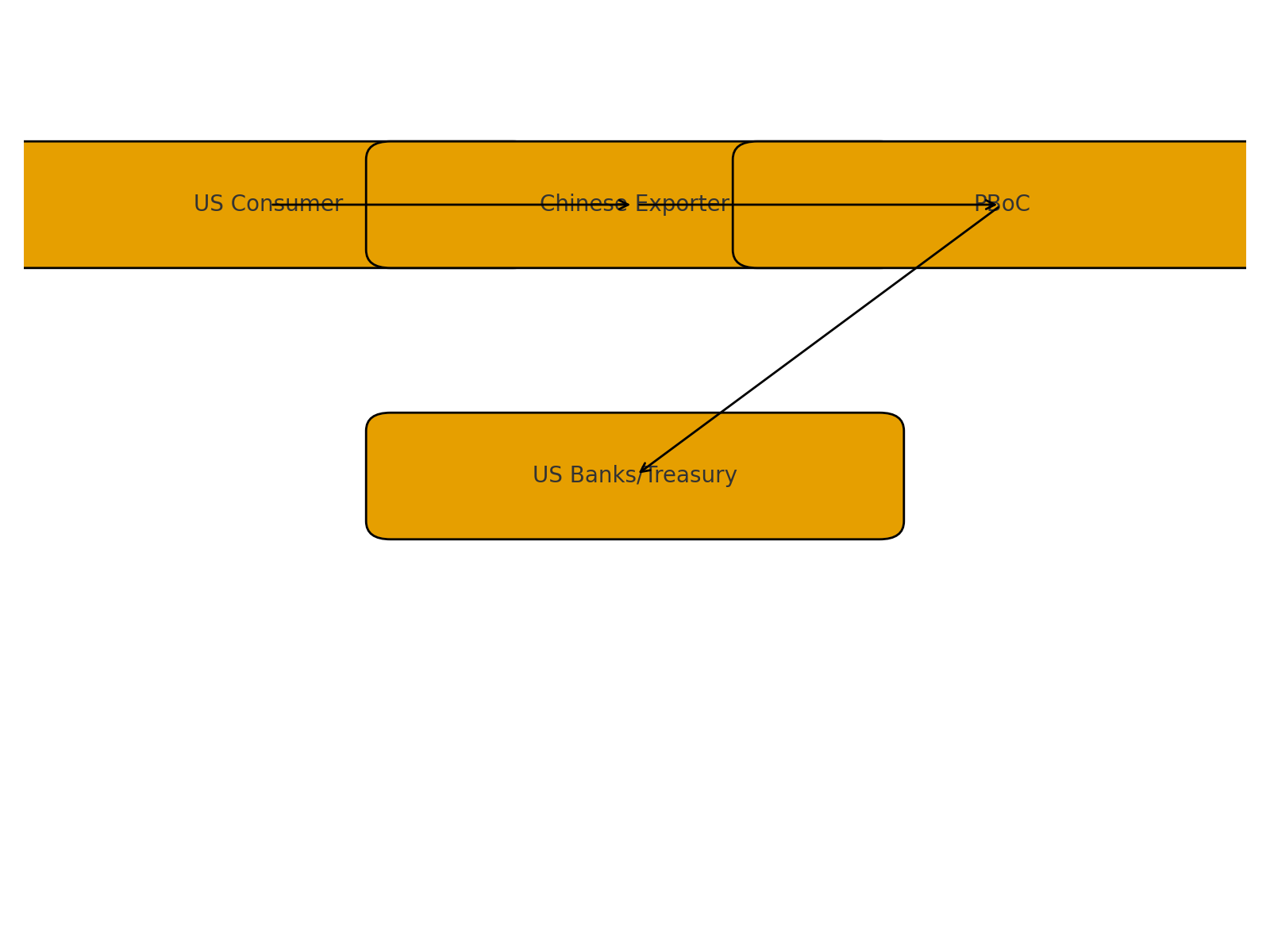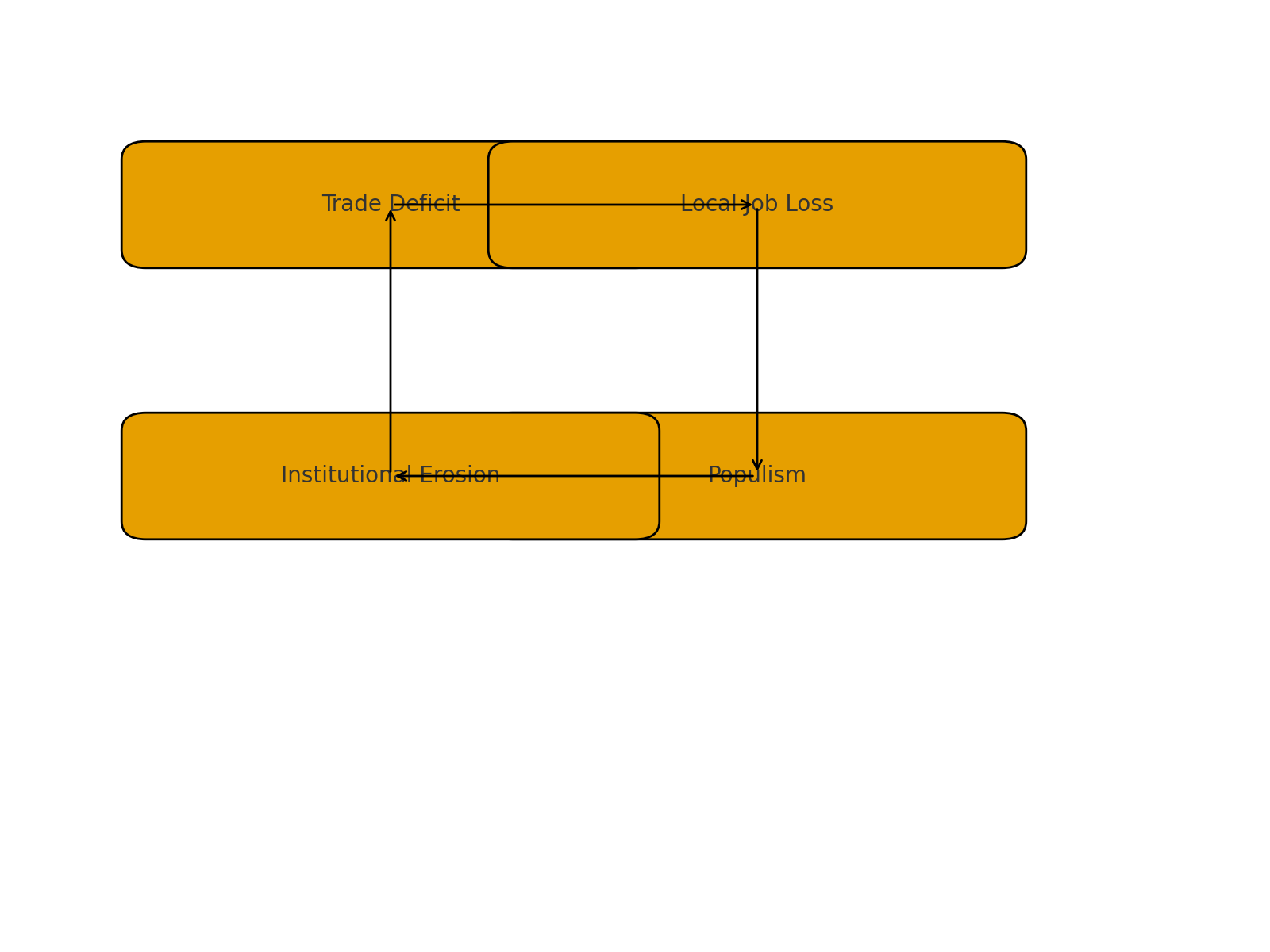Author’s Note: This is not original research, but the result of an extended conversation with ChatGPT, in large part fueled by my interest in Modern Money Theory (MMT) and a desire to understand how a reserve currency operates at the simplest level. If you are interested in a deeper dive, I suggest reading “The Deficit Myth,” by Stephanie Kelton.
When an American buys a television, a phone, or a pair of shoes made overseas, it feels like a simple transaction. Money leaves your account, and a product shows up at your door. But behind that everyday purchase lies one of the most powerful — and most misunderstood — engines of the modern world. That engine is the U.S. dollar.
For decades, the United States has enjoyed a unique position in the global economy. It can buy physical goods from the rest of the world in exchange for pieces of paper — or more precisely, digital bank entries — that it alone has the authority to create. Other countries not only accept these dollars; they actively compete to earn them.
On the one hand, this system has brought enormous benefits to Americans, including low prices, global influence, and access to a nearly endless stream of imported goods. On the other hand, it has also produced deep regional inequality within the United States, weakened the social fabric, and fueled a political backlash reshaping American democracy.
To understand why this system persists, why it’s now under strain, and what it will take to repair it, we need to follow the dollar from the moment it leaves your wallet to the moment it circles back as a U.S. Treasury bond — and then trace the social and political consequences that follow, highlighting the dollar’s central role in global trade and domestic stability. What actually happens to the money is far from obvious.
Imagine an American buys a $100 product manufactured in China. The $100 is transferred first to the Chinese exporter’s bank account. But those dollars are not usable inside China. A factory in Guangdong can’t pay its workers in U.S. currency. So the exporter exchanges dollars at the People’s Bank of China, China’s central bank, for the local currency, the yuan.
The exporter now has yuan to operate on the home front. And China’s central bank now holds $100. But even China can’t spend those dollars domestically. They are foreign currency. They’re only good abroad. So what does China do?
It invests them back into the United States. Most often, China uses those dollars to buy U.S. Treasury bonds — effectively lending the money back to the U.S. government. And with this transaction, the dollar has completed its round trip: from an American consumer to a Chinese business to China’s central bank, and finally back to the U.S. financial system.
At this point, you can see that something unusual is happening. The United States buys physical goods — televisions, cars, electronics — and the dollars it spends end up right back in the country, parked safely in government debt. China, in turn, ends up holding U.S. assets, not goods.
It is worth repeating. The U.S. receives products. China receives dollars. The dollars return home. You can picture this visually as a loop — a flow of money out of the U.S. and back again, powering global trade.

At first glance, this seems like the world’s most favorable deal. And in many ways, it is. But China doesn’t do this out of generosity. It does it because the system serves its interests just as powerfully as it serves America’s.
If China can’t spend dollars internally, why does it still accumulate them by the trillions? Because the arrangement delivers crucial benefits.
First, it delivers jobs. Export industries employ tens of millions of Chinese workers. Social stability depends on employment; employment depends on exports; and exports depend on a competitive currency. China buys dollars and holds Treasuries in part to prevent the yuan from rising and making its products more expensive abroad.
Second, it delivers industrial growth. Exporting manufactured goods has been the backbone of China’s modernization. Earning dollars gives China the ability to buy foreign machinery, semiconductors, food, and, most importantly, oil — none of which can be purchased with yuan.
Third, it delivers financial protection. Large reserves of dollars and Treasuries help China defend its currency during global shocks. They are a buffer against crisis.
So while it may seem odd that China ships products to the U.S. in return for claims on American debt, those claims are central to China’s economic strategy. The system is not charity; it’s a calculated partnership.
For the United States as a whole, buying foreign goods cheaply is a clear win, but not everyone wins equally. Over time, the steady flow of inexpensive imports, made possible by the dollar’s global dominance, contributed to the erosion of American manufacturing. Factories closed, and jobs disappeared. Some regions reinvented themselves, but some never recovered.
This weakens the U.S. from within. This regional decline created something more profound than economic loss. It produced:
- wounded pride
- declining local services
- fraying communities
- intergenerational pessimism
- anger at both elites and institutions
The anger is not abstract. It is political fuel. Places where jobs disappear become places where trust in government collapses. That collapse feeds populism, which in turn destabilizes American institutions, from foreign alliances to democratic norms, and makes the U.S. a less predictable global actor. This, in turn, undermines international confidence in the very system that supports American power.

This is the danger: A system that economically strengthens America as a nation is politically weakening it from the inside. Escaping this negative cycle doesn’t require dismantling global trade or abandoning the dollar’s central role. Instead, it demands policies that redirect the benefits of America’s financial power into rebuilding communities and addressing systemic issues.
Since the United States has unmatched financial capacity, it should use that capacity to rebuild the social foundation that keeps the whole system stable. This means focusing not on protectionism but on resilience:
- investing in workers whose industries are disrupted
- supporting communities left behind by global shifts
- building strategic industrial capacity at home
- modernizing infrastructure
- reducing political incentives for polarization
- stabilizing the country’s role on the global stage
It also means reframing the purpose of America’s financial power. Issuing the world’s currency is a privilege. It should not be used solely to inflate asset prices or finance private consumption. It should be used to reinvest in the public goods, education, health, infrastructure, and innovation that make American society strong.
The United States, more than any nation in history, can finance its own renewal. It can borrow in its own currency. It can attract global savings on demand. It can run trade deficits without destabilizing its exchange rate. These are extraordinary advantages.
But the preservation of this system depends on the social cohesion that underpins it. Without a stable domestic base, global leadership becomes harder to sustain. Alliances become shakier. Markets grow more nervous. The political pendulum swings more violently.
If America continues on its current path, in which the economic benefits of global trade are not broadly shared, then the dollar system will erode, slowly but inevitably. Not because China destroys it, but because Americans lose faith in the structure of their own society.
The choice is simple. Use the extraordinary privilege of the dollar equitably, or watch that privilege slip away. There is no need to surrender the benefits of the dollar as a reserve currency as long as the bellows of inequality are dismissed. The global system runs on trust, and trust begins with a society that believes in itself.





























